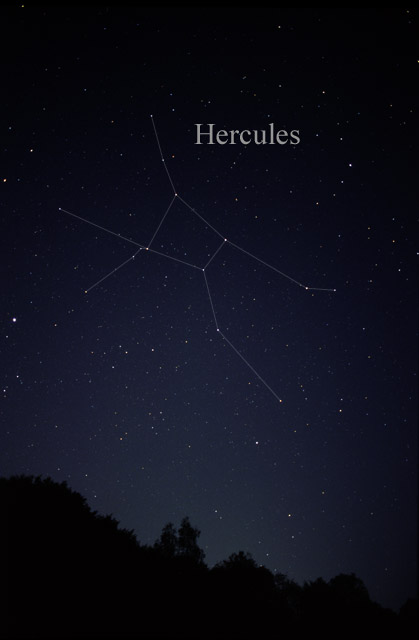|
Ramus Pomifer
Ramus Pomifer (Latin for ''apple branch'') was a constellation between Hercules and Lyra. It was depicted in the form of a branch held in Hercules' left hand. The also-obsolete constellation of Cerberus In Greek mythology, Cerberus (; grc-gre, Κέρβερος ''Kérberos'' ), often referred to as the hound of Hades, is a multi-headed dog that guards the gates of the Underworld to prevent the dead from leaving. He was the offspring of the mo ... - made up of much the same stars - became combined with it in later depictions, with the name "Cerberus et Ramus". References Former constellations {{former-constellation-stub ... [...More Info...] [...Related Items...] OR: [Wikipedia] [Google] [Baidu] |
Bode Cerberus
Bode may refer to: People * Bode (surname) * Bode Miller (born 1977), American skier * Bode Sowande (born 1948), Nigerian writer and dramatist * Bode Thomas (1918–1953), Nigerian politician Geography * Böde, village in Zala County, Hungary * Bode, Iowa, city in Humboldt County, Iowa, United States * Bode, Nepal, city in Bhaktapur District, Nepal * Bode (river), a major river in Saxony-Anhalt, Germany, tributary of the Saale * Bode (Wipper), a small river in Thuringia, Germany, tributary of the Wipper Other * Bode (crater), lunar crater * Bode plot, graph used in electrical engineering and control theory * Bode (fashion brand), American clothing company See also * Bodie (other) * Bodhi {{disambiguation, geo, given name ... [...More Info...] [...Related Items...] OR: [Wikipedia] [Google] [Baidu] |
Latin Language
Latin (, or , ) is a classical language belonging to the Italic languages, Italic branch of the Indo-European languages. Latin was originally a dialect spoken in the lower Tiber area (then known as Latium) around present-day Rome, but through the power of the Roman Republic it became the dominant language in the Italy (geographical region), Italian region and subsequently throughout the Roman Empire. Even after the Fall of the Western Roman Empire, fall of Western Rome, Latin remained the common language of international communication, science, scholarship and academia in Europe until well into the 18th century, when other regional vernaculars (including its own descendants, the Romance languages) supplanted it in common academic and political usage, and it eventually became a dead language in the modern linguistic definition. Latin is a fusional language, highly inflected language, with three distinct grammatical gender, genders (masculine, feminine, and neuter), six or seven ... [...More Info...] [...Related Items...] OR: [Wikipedia] [Google] [Baidu] |
Hercules (constellation)
Hercules is a constellation named after Hercules, the Roman mythology, Roman mythological hero adapted from the Greek mythology, Greek hero Heracles. Hercules was one of the 48 constellations listed by the second-century astronomer Ptolemy, and it remains one of the IAU designated constellations, 88 modern constellations today. It is the fifth-largest of the modern constellations and is the largest of List of brightest stars, the 50 which have no stars brighter than apparent Magnitude (astronomy), magnitude +2.5. Characteristics Hercules is bordered by Draco (constellation), Draco to the north; Boötes, Corona Borealis, and Serpens, Serpens Caput to the east; Ophiuchus to the south; Aquila (constellation), Aquila to the southwest; and Sagitta, Vulpecula, and Lyra to the west. Covering 1225.1 square degrees and 2.970% of the night sky, it ranks fifth among the 88 constellations in size. The three-letter abbreviation for the constellation, as adopted by the International Astro ... [...More Info...] [...Related Items...] OR: [Wikipedia] [Google] [Baidu] |
Lyra
Lyra (; Latin for lyre, from Greek ''λύρα'') is a small constellation. It is one of the 48 listed by the 2nd century astronomer Ptolemy, and is one of the modern 88 constellations recognized by the International Astronomical Union. Lyra was often represented on star maps as a vulture or an eagle carrying a lyre, and hence is sometimes referred to as Vultur Cadens or Aquila Cadens ("Falling Vulture" or "Falling Eagle"), respectively. Beginning at the north, Lyra is bordered by Draco, Hercules, Vulpecula, and Cygnus. Lyra is nearly overhead in temperate northern latitudes shortly after midnight at the start of summer. From the equator to about the 40th parallel south it is visible low in the northern sky during the same (thus winter) months. Vega, Lyra's brightest star, is one of the brightest stars in the night sky, and forms a corner of the famed Summer Triangle asterism. Beta Lyrae is the prototype of a class of binary stars known as Beta Lyrae variables. These binary st ... [...More Info...] [...Related Items...] OR: [Wikipedia] [Google] [Baidu] |
Cerberus (constellation)
Cerberus is an obsolete constellation created by Hevelius in the 1600s, whose stars are now included in the constellation Hercules. It was depicted as a three-headed snake that Hercules is holding in his hand. The constellation is no longer in use. This constellation "figure typified the serpent ... infesting the country around Taenarum the Μέτωπον of Greece, the modern Cape Matapan." The presence of Cerberus (Kerberos) at Taenarum (Tainaron) is mentioned by Strabo, Statius, and Seneca the Younger. John Senex combined this constellation with the likewise obsolete constellation Ramus Pomifer Ramus Pomifer (Latin for ''apple branch'') was a constellation between Hercules and Lyra. It was depicted in the form of a branch held in Hercules' left hand. The also-obsolete constellation of Cerberus In Greek mythology, Cerberus (; gr ..., an apple branch held by Hercules, in his 1721 star map to create "Cerberus et Ramus". Notes External links Ian Ridpath's Star Tales: ... [...More Info...] [...Related Items...] OR: [Wikipedia] [Google] [Baidu] |



